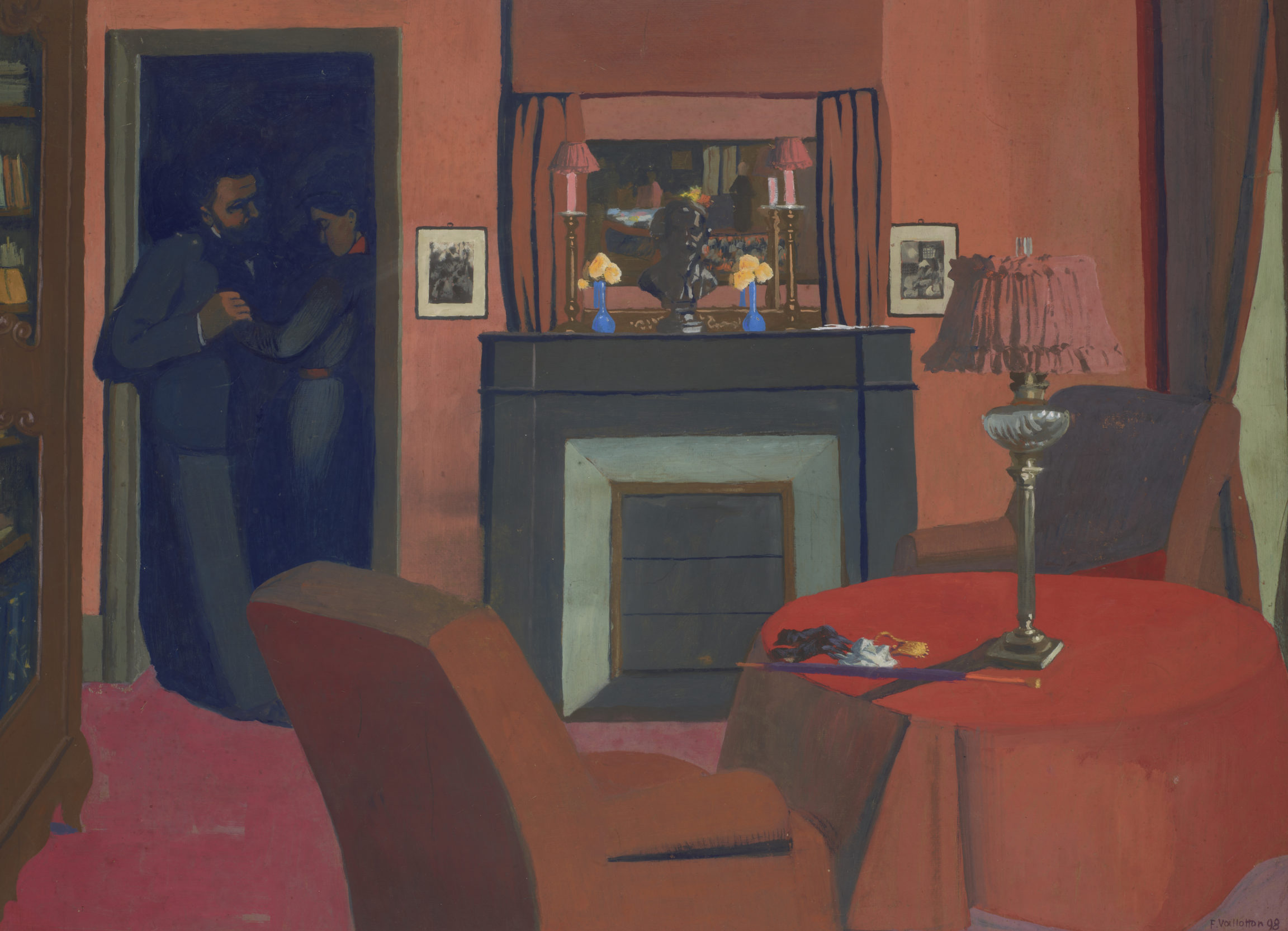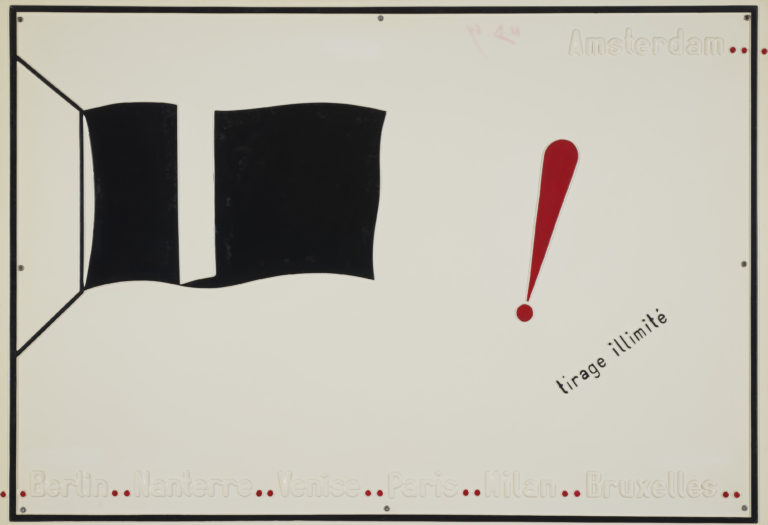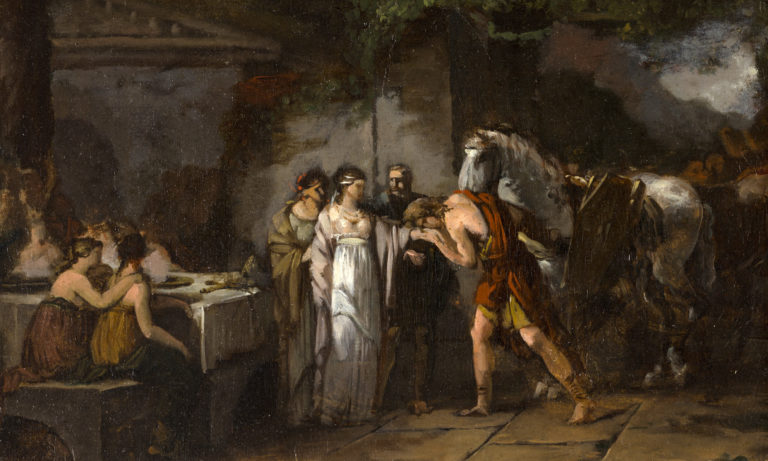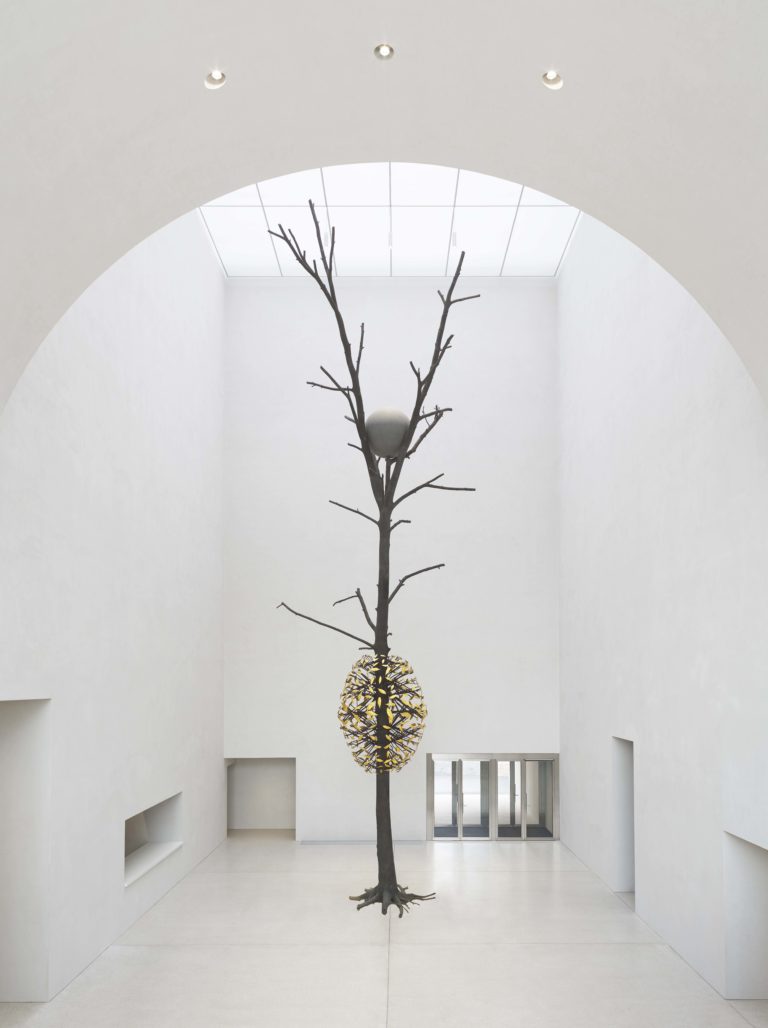Bibliography
Guy Cogeval, Isabelle Cahn, Marina Ducrey and Katia Poletti (eds.), Félix Vallotton. Le feu sous la glace, exh. cat. Paris, Musée d’Orsay, Paris, RMN – Grand Palais, 2013: n. 55.
Marina Ducrey, in collaboration with Katia Poletti, Félix Vallotton, 1865-1925: l’œuvre peint, 3 vol., Lausanne, Fondation Félix Vallotton, Zurich, Institut suisse pour l’étude de l’art, Milan, 5 Continents Editions, 2005: n. 251.
Sasha M. Newman (ed.), Félix Vallotton, exh. cat. Lausanne, Musée cantonal des Beaux-Arts, Paris, Flammarion, 1992.




Félix Vallotton attained recognition in the 1890s with his woodcuts, and in particular with his Intimités series, ten scenes from the private life (intimité) of a modern couple. For a shared exhibition with the Nabis to be put on at the Durand-Ruel gallery in 1899, the Swiss artist presented a new series of Intimités, but this time they were paintings. With their uncompromising colours, clinical delineation of forms and strangely disquieting themes, these six Intérieurs avec figures represent the quintessence of Vallotton’s art at the turn of the century.
La chambre rouge is the first work in the series, and gives the key. While descriptive, the title could also refer to the similarly titled novel by August Strindberg (1879), a mordant attack on the hypocrisy of bourgeois life. Here, Vallotton – himself about to take the marital vows – denounces adultery, the flip side of the sacrosanct institution of marriage.
The painting is a close-up of a theatre set whose vermilion colour symbolises the violence of male desire. In the shadow of a doorway, a man is trying to force himself on a grief-stricken woman. Each object is like a clue to the crime, starting with the curtains, which suggest a gaping vulva. On the table, gloves nestling beside a handkerchief used to dry tears, a purse indicating some financial transaction, and a parasol pointing to the guilty party. On the mantelpiece is a curious altarpiece formed by the bust of Vallotton himself set between two bright yellow bouquets, themselves flanked by modern lamps and then Japanese prints. Behind the bust – ‘behind its back’ – is a mirror protected by red curtains and reflecting, but not inverting, a work by Édouard Vuillard. And not just any work: this is Grand intérieur aux six personnages (1897, Zurich, Kunsthaus), in which the family circle accuses two adulterers, the painter Ker-Xavier Roussel and Germaine Rousseau, wife of the artist Paul Ranson. Finally, the bookcase on the left ironically alludes to the declared function of literature, which, like painting, is said to raise man above the animal.